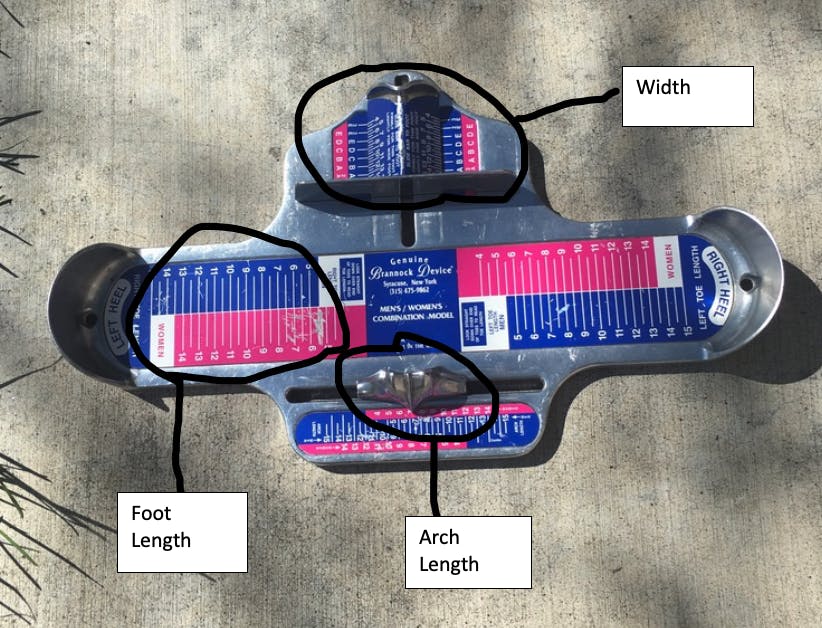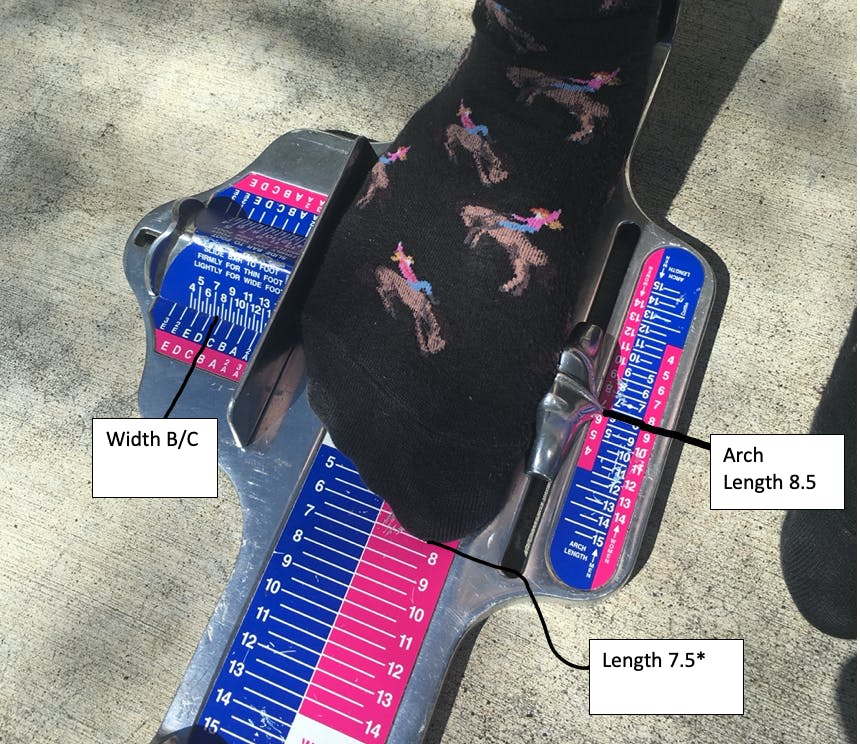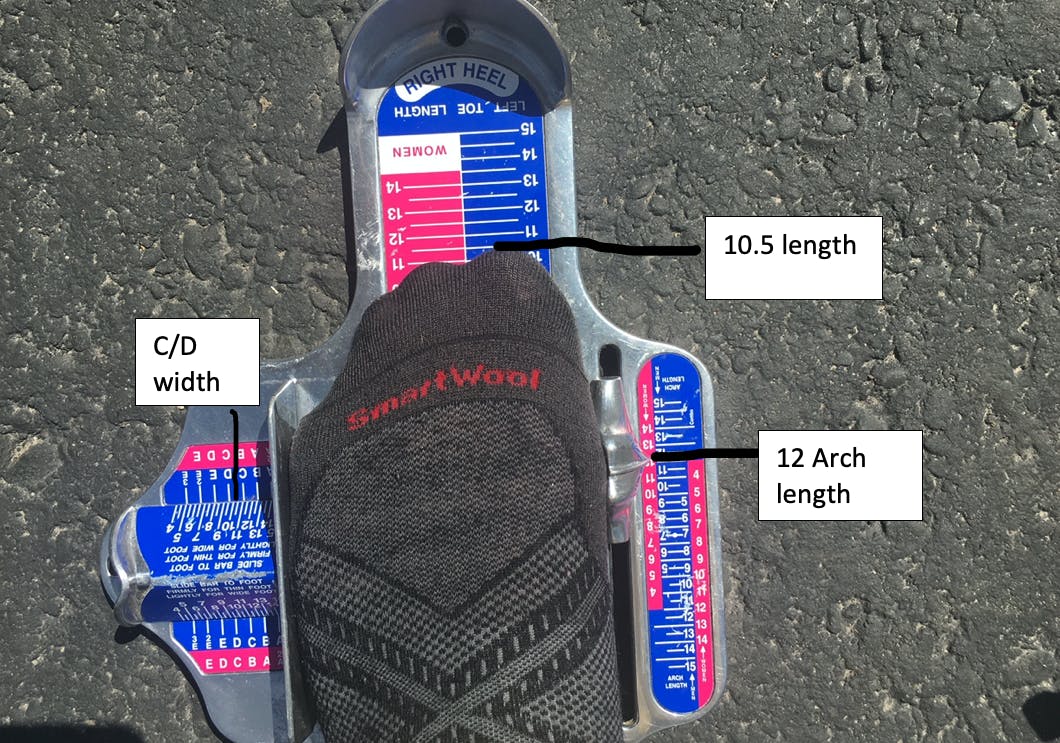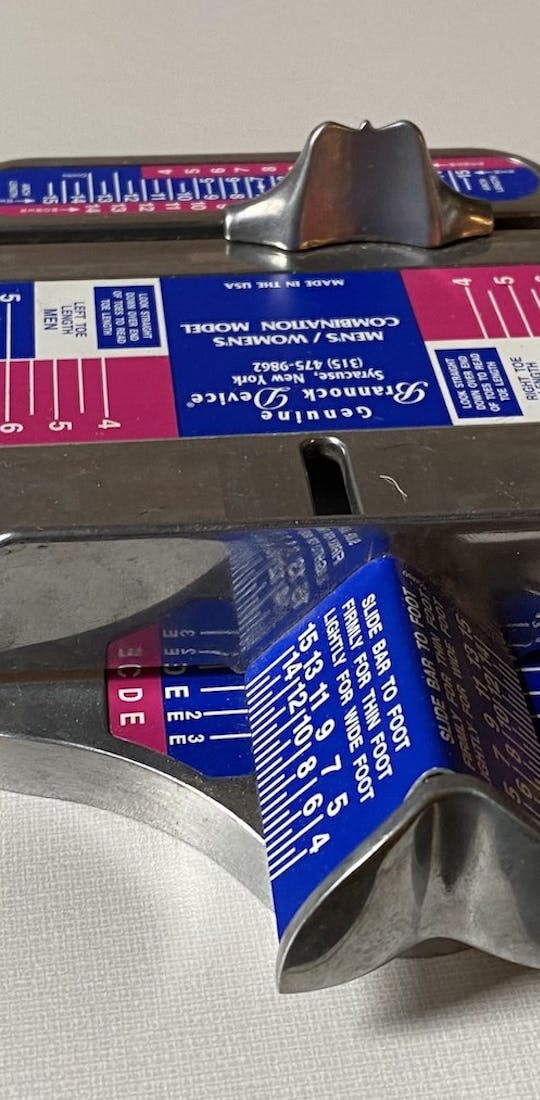When was the last time you had your foot measured?
I’ve spent many hours on retail floors across the country and when I ask that question, customers often reply, “not since I was a kid.” Well, a lot can change from the time you were 15. Believe me, at 60, I sure have had that experience. Age, weight, birthing a child, (no, I didn’t do that), knee or back injuries (yes, I’ve had those) and all sorts of things can change your foot's size and shape over time. So, if you haven’t been measured since you were 15, it’s high time you get yourself to a good "sit and fit" shop, and ask someone to use a Brannock device on your feet.
The Brannock device is a tool that was patented by Charles Brannock in 1927 and is the most accurate tool (with 96% accuracy) in correctly measuring your feet. I’ve heard store employees and customers say things like, “that’s such an old tool" and "it hasn’t changed" and "it can’t be that accurate.” I like to remind them that a ruler is an old tool that hasn’t changed either, and I know it’s not version 15.7 of an app on your phone, but it still works just fine.
A Brannock device measures three important features of your foot: length, width, and arch length.

Measuring foot length and width may be obvious
but the latter may be something many people do not quite understand. Of course it is important to have a shoe that is long enough and wide enough, but does it flex in the right spot given the shape of your foot? This is where arch length matters.
Your arch length is the distance from your heel to the bump on the joint (the metatarsal head) of your big toe. It is where your foot flexes when you take a step. Ideally, you want to have that part of your foot line up with the part of the shoe that flexes when you walk. Most people do not pay much attention to this measurement. They will wear a shoe that their foot fits into, but sometimes they find they are getting heel lift, blisters, discomfort, or worse—pain from conditions like plantar fasciitis. Taking note of the arch length will go a long way to avoiding such maladies. In fact, arch length is probably the most important measurement to consider when choosing the proper shoe.
Take, for example, the below photo of a woman's foot.

Reading the pink bars, her foot length is exactly 7.5. Her width is between a B and a C, and her arch length is 8.5.
Where she will physically be able to fit into a 7.5 shoe, she likely will feel better in a size 8. When trying on shoes, a general rule is to split the difference as a good starting point. If I were the employee on the floor, I’d bring out size 8s and 8.5s for her to try. Remember, a good fit leaves plenty of room for the toes so there is no contact with the front, top or sides of the shoe. The heel is comfortably in place with no heel lift or forward motion and there is no sloppy side-to-side motion.
Now let’s look at this man's foot. His left foot measures, (read the blue) 10.5 Length, C/D width, and about 12 on arch length.

His right foot is a little over 11 length, C/D width and 12.5 arch length.
Again, where he could fit into a size 11 shoe, he fits much better into a 12. His foot stays in place with the Oboz O FIT insole, it flexes in the proper spot and it is comfortable.

To test out a Brannock device for yourself, visit your local Oboz Dealer.
To find your shoe fit at home using a more bare-bones method, check out this video with Dave from our Outreach & Training team.




